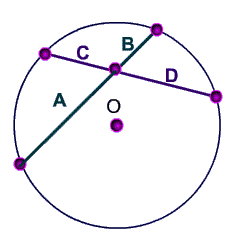Science
Related: About this forumwormholes - how short is a shortcut, really?
Wormholes are commonly mentioned as a possible way to take shortcuts through the manifold we live in. Like so:

Aside from the technical issues of making them, or keeping them open, etc, the other thing that I wonder about is, even if we could make them or use them, how much would they actually help?
In the picture above, you notice that a short cut helps if the 'normal' manifold has a high curvature, that we can short-cut through. But how much curvature in the real universe do we have to make use of? For example, cutting cords through a sphere is shorter, but not really by an amount that is game-changing:

In the image above, cutting through the curvature gets you a maximum of 3.14x reduction in distance. Not really that helpful over cosmological distances.
Perhaps there are varieties of wormhole where the shortcut is not limited to cutting through native curvature? I don't know.
dipsydoodle
(42,239 posts)as a spiral of infinite length but only a short distance when taking a short cut from end to end across the middle.
i.e. - if a spiral had infinite width across its diameter but only infinitely thin thickness of each layer then the distance between the ends would be minimal.
Stargazer09
(2,132 posts)Definitely worth further research.
Stargazer09
(2,132 posts)I have seen that first illustration in several places when discussing wormholes. The problem I see is this: how do we fold space in half? Sure, it looks like an elegant solution to long distance space travel, but honestly, we can't even get humans to Mars. What makes us think we will ever figure out how to fold spacetime?
Speck Tater
(10,618 posts)...that we will discover a way to locally distort space to allow us to effectively travel faster than light, perhaps by dragging a piece of local space with us as we travel.
Speck Tater
(10,618 posts)that the circle is already 2-dimensional and you've only used two dimensions for your wormhole. You need to draw your circle on a piece of paper and then wad the paper up into a tight ball to connect points through the third dimension.
Distance in dimension N+1 is not necessary correlated to distance in N dimensions. A two-dimensional wormhole in two-dimensional space is not a wormhole, it's an alternate route in 2D. Whether a wormhole is or is anot a shortcut would depend on the geometry of space in dimensions higher than the three we are aware of.
phantom power
(25,966 posts)in that case a cord is indeed a wormhole cutting through the higher-dimensional 2D curvature.
In our universe, (assuming our universe is hyperpherical), our manifold would be a hypersphere curved in 4D. A wormhole could cut a cord through the 4D curvature. How much distance would this save?
if you take the viewpoint that a wormhole can cut through native curvature, I think the native curvature is very small, and so you aren't going to get a game-changing benefit by cutting through it. If there were people actually bending the universe in tight folds to cut through, I think that would be evident to us. And you'd have to be bending it in various ways all the time to go the places you wanted.
Speck Tater
(10,618 posts)Obvious, but I completely overlooked it. Thanks for explaining. ![]()
DetlefK
(16,423 posts)That is, distances in the order of magnitude of millions of light-years and bigger. IIRC the cosmic-microwave-background wouldn't adhere to the black-body-spectrum if the metric of the universe were curved.